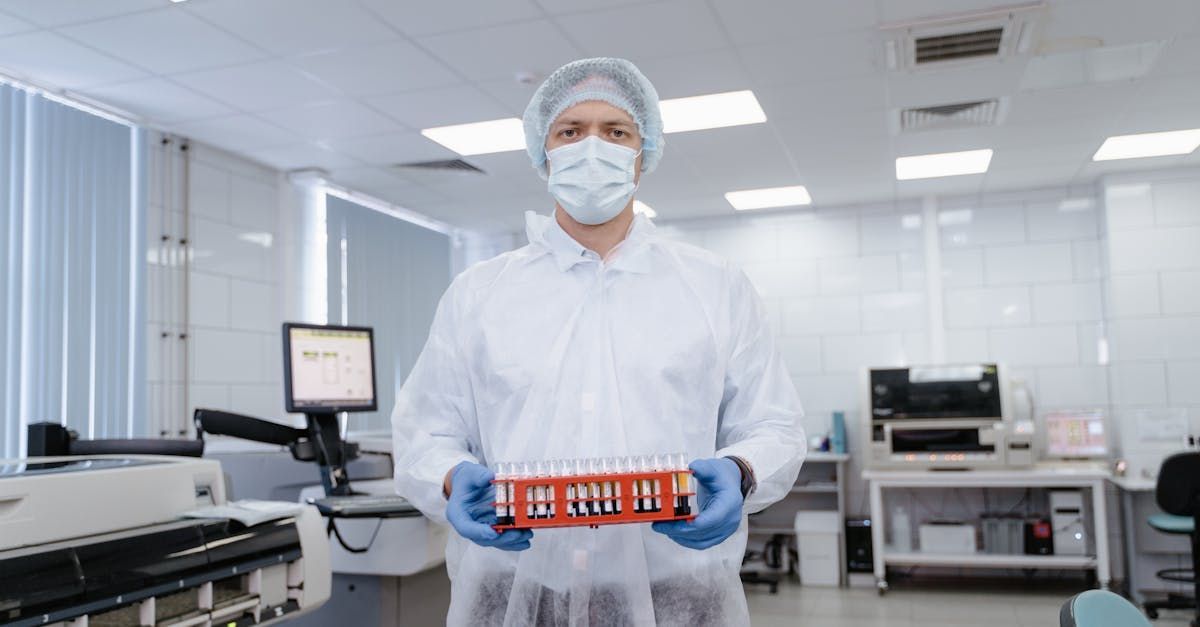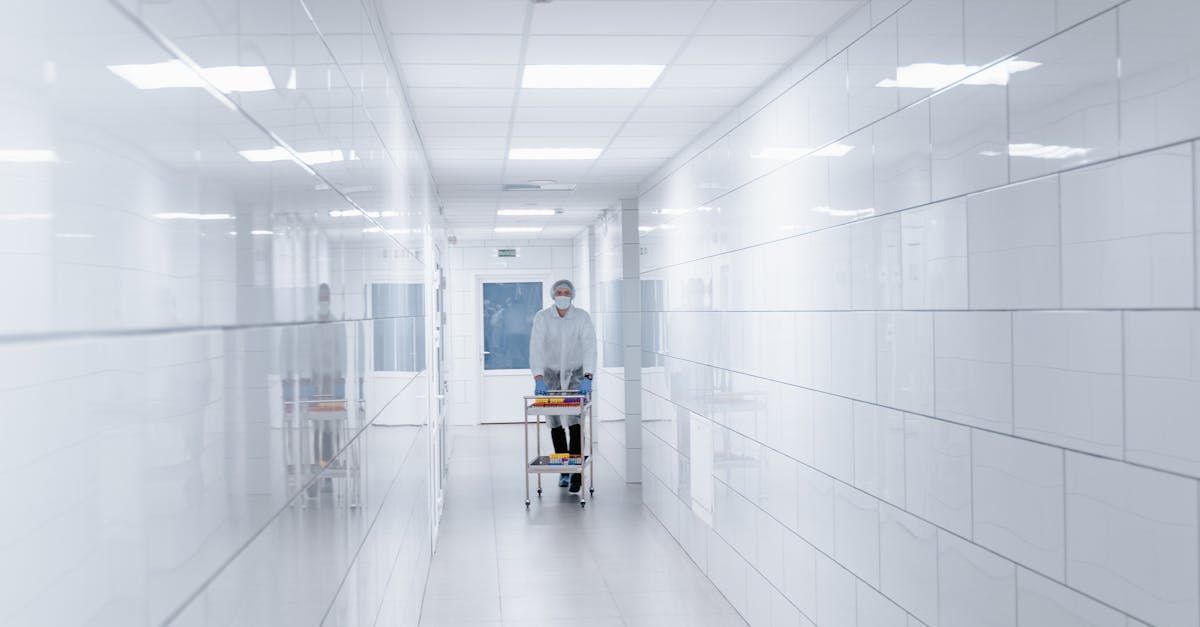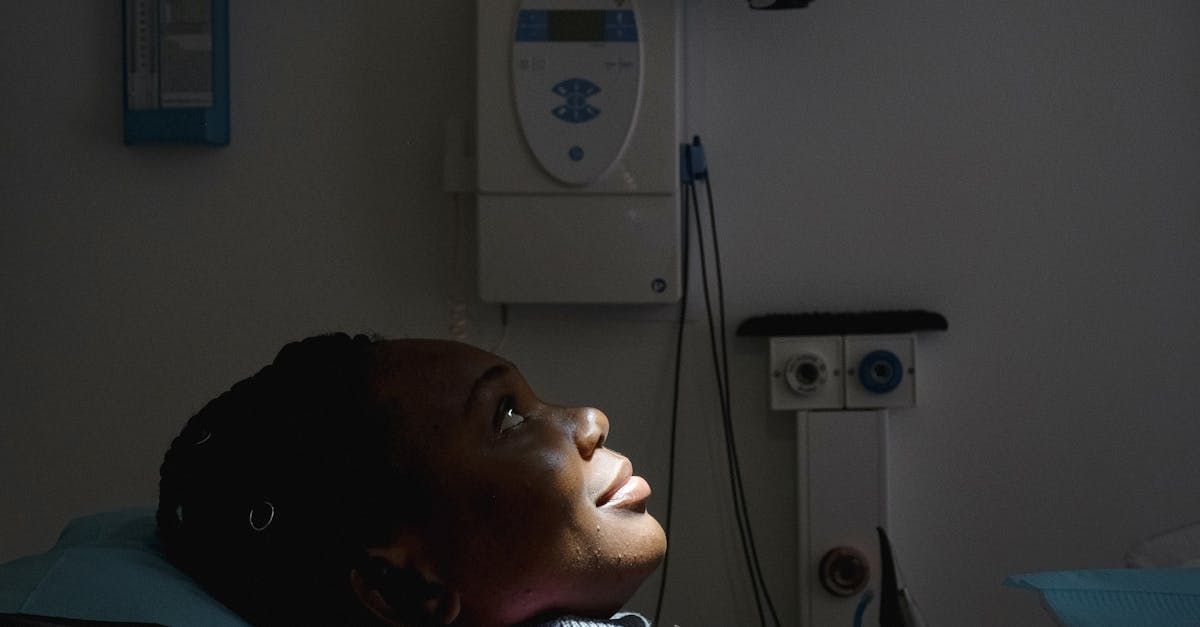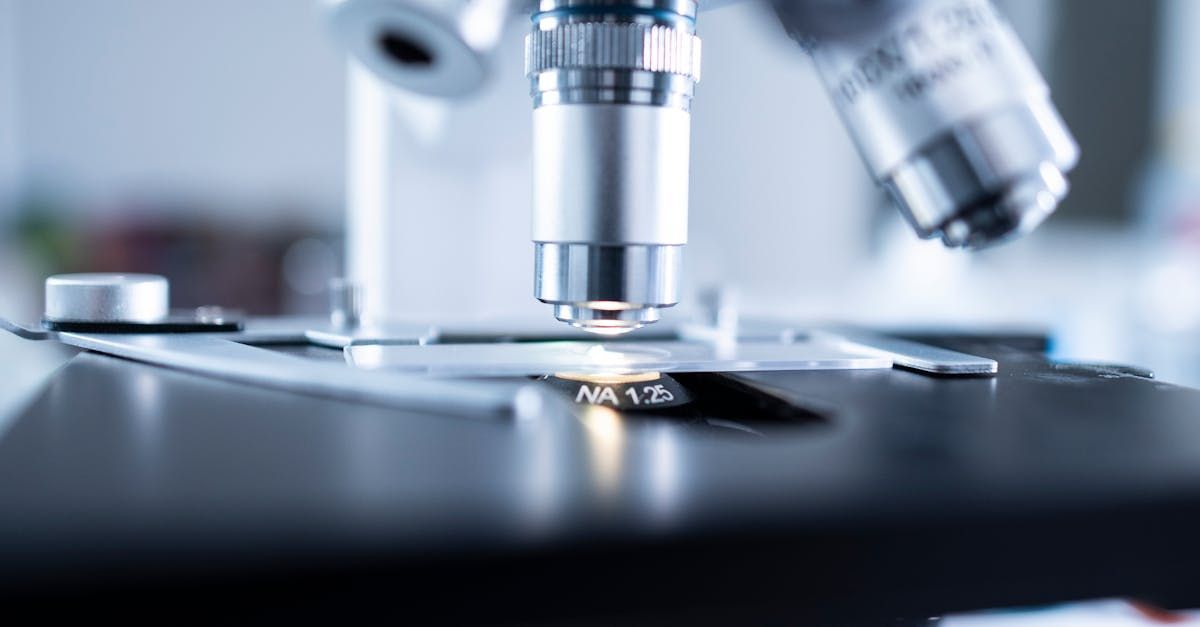The Role of Bioprinting in HealthTech Investments
Bioprinting technology represents a frontier in healthcare innovation, promising to revolutionize medical procedures and patient care. Leveraging 3D printing technologies and biomaterials, bioprinting offers unprecedented precision and customization in creating tissues and organs. The significance of bioprinting in HealthTech cannot be overstated, as it holds the potential to address critical medical needs and drive forward the capabilities of modern medicine. This blog aims to explore the role of bioprinting in HealthTech investments, providing insights into its applications, benefits, challenges, and future prospects.
Understanding Bioprinting
Bioprinting is an advanced form of 3D printing that uses cells, growth factors, and biomaterials to fabricate biomedical parts, often with the aim of replicating natural tissue characteristics. The scope of bioprinting encompasses a wide range of medical applications, from tissue engineering to the creation of complex organ structures. Key components of bioprinting technology include:
- 3D Printing Technology: This forms the basis of bioprinting, allowing for the precise layering of biomaterials to create three-dimensional structures.
- Biomaterials: These are substances used to interact with biological systems for medical purposes. Biomaterials in bioprinting can include hydrogels, polymers, and composites that provide a scaffold for cell attachment and growth.
- Living Cells: Essential for creating tissues and organs that can function within the human body, living cells are carefully cultured and incorporated into bioprinted structures.
Examples of bioprinting applications in healthcare are vast. They range from printing skin grafts for burn victims to creating organoids for drug testing, and even the potential future creation of full-scale organs for transplantation.
Benefits of Bioprinting
The benefits of bioprinting are multifaceted, impacting both the precision of medical procedures and the overall efficiency of healthcare delivery. Here are some key benefits:
- Improved Precision and Efficiency: Bioprinting allows for highly precise fabrication of tissues and organs, tailored to the specific needs of individual patients. This precision reduces the risks associated with traditional transplants and surgeries.
- Personalized Medicine: By using a patient’s own cells, bioprinting can create personalized tissues and organs, significantly lowering the chances of immune rejection and improving patient outcomes.
- Tissue Engineering: Bioprinting facilitates the development of tissue models for research and drug testing, accelerating the development of new treatments and therapies.
- Cost Savings and Resource Optimization: While the initial costs of bioprinting technology can be high, the long-term savings in terms of reduced need for donor organs and decreased hospital stays can be substantial.
Case Studies of Bioprinting in Healthcare
Several case studies highlight the transformative potential of bioprinting in healthcare:
- Skin Grafts for Burn Victims: Bioprinting has been successfully used to create skin grafts tailored to individual burn victims. This technology not only speeds up the healing process but also reduces the risk of complications and infections associated with traditional grafting techniques.
- Creating Organoids for Drug Testing: Researchers have used bioprinting to create organoids—miniature, simplified versions of organs—that can be used for drug testing. This innovation allows for more accurate predictions of how drugs will interact with human tissues, reducing the need for animal testing and speeding up the development of new medications.
- Developing Customized Implants: Bioprinting has enabled the creation of customized implants that perfectly match the patient's anatomy. This has been particularly useful in dental and orthopedic applications, where precise fitting is crucial for success.
The impact of these bioprinting solutions on patient outcomes and healthcare delivery is profound, demonstrating improved healing times, reduced rejection rates, and overall better patient experiences.
Challenges and Risks
Despite its promising potential, bioprinting faces several challenges and risks:
- Technical Challenges: The complexity of creating functional tissues and organs that can integrate seamlessly with the human body is a significant hurdle. Issues such as vascularization (the creation of blood vessel networks within printed tissues) remain a major challenge.
- Regulatory and Compliance Hurdles: Bioprinting technologies must navigate a complex regulatory landscape to ensure safety and efficacy. Obtaining approval from regulatory bodies like the FDA can be a lengthy and uncertain process.
- Ethical Considerations: The use of human cells and the potential for creating entire organs raise ethical questions about the extent to which bioprinting should be pursued and the regulations that should govern its use.
Strategies for overcoming these challenges include continued research and development, collaborations between industry and regulatory bodies, and robust ethical frameworks to guide the application of bioprinting technologies.
Future Trends and Innovations
The future of bioprinting is bright, with several emerging trends and innovations set to further advance the field:
- Enhanced Biomaterials: Advances in biomaterials will enable the creation of more complex and functional tissues. Researchers are exploring new materials that can better mimic the properties of natural tissues.
- Integration of AI and Machine Learning: AI and machine learning are being integrated into bioprinting processes to optimize printing parameters and improve the accuracy and functionality of printed tissues.
- Expansion of Applications: The range of applications for bioprinting is expected to expand significantly, with potential uses in areas such as organ transplantation, regenerative medicine, and personalized drug development.
Predictions for the next decade include the development of more sophisticated bioprinted organs, increased use of bioprinting for personalized treatments, and greater integration of bioprinting technologies into mainstream healthcare practices.
Investment Opportunities in Bioprinting
Investing in bioprinting presents a unique opportunity to be part of a rapidly evolving and impactful sector of HealthTech. Key areas for investment include:
- Promising Companies and Technologies: Identifying innovative companies that are leading the way in bioprinting technology. This includes startups and established companies that are developing cutting-edge bioprinting solutions.
- Factors to Consider: When investing in bioprinting, it is important to consider the technological viability, regulatory pathway, market potential, and the expertise of the company's leadership team.
- Long-Term vs. Short-Term Strategies: While bioprinting offers significant long-term potential, investors should also consider short-term strategies to capitalize on emerging trends and technologies. Diversifying investments across different aspects of bioprinting, such as materials, equipment, and applications, can also mitigate risks.
Bioprinting stands at the intersection of innovation and healthcare, offering transformative potential for medical procedures and patient care. By investing in bioprinting technologies, stakeholders can not only contribute to the advancement of healthcare but also capitalize on a high-growth, impactful sector of the HealthTech industry.
As the technology continues to evolve, the integration of bioprinting into healthcare practices is expected to become more widespread, leading to improved patient outcomes, cost savings, and enhanced capabilities in personalized medicine. Stakeholders are encouraged to support and invest in bioprinting solutions, driving forward the future of healthcare and making a tangible difference in patient lives.
Bioprinting technology represents a frontier in healthcare innovation, promising to revolutionize medical procedures and patient care. Leveraging 3D printing technologies and biomaterials, bioprinting offers unprecedented precision and customization in creating tissues and organs. The significance of bioprinting in HealthTech cannot be overstated, as it holds the potential to address critical medical needs and drive forward the capabilities of modern medicine. This blog aims to explore the role of bioprinting in HealthTech investments, providing insights into its applications, benefits, challenges, and future prospects.
Understanding Bioprinting
Bioprinting is an advanced form of 3D printing that uses cells, growth factors, and biomaterials to fabricate biomedical parts, often with the aim of replicating natural tissue characteristics. The scope of bioprinting encompasses a wide range of medical applications, from tissue engineering to the creation of complex organ structures. Key components of bioprinting technology include:
3D Printing Technology
This forms the basis of bioprinting, allowing for the precise layering of biomaterials to create three-dimensional structures. The technology has evolved significantly, with advancements in precision, speed, and material compatibility making bioprinting more viable and effective.
Biomaterials
These are substances used to interact with biological systems for medical purposes. Biomaterials in bioprinting can include hydrogels, polymers, and composites that provide a scaffold for cell attachment and growth. The choice of biomaterials is crucial, as they need to mimic the physical and chemical properties of natural tissues.
Living Cells
Essential for creating tissues and organs that can function within the human body, living cells are carefully cultured and incorporated into bioprinted structures. The ability to use a patient’s own cells can reduce the risk of immune rejection and improve
the success rates of bioprinted tissues and organs.
Growth Factors and Bioinks
Growth factors are biologically active molecules that influence cell growth and differentiation. In bioprinting, bioinks are used, which are combinations of cells and biomaterials. These bioinks must be carefully formulated to ensure that they provide the right environment for cell growth and function once printed into the desired shapes.
Applications of Bioprinting in Healthcare
The potential applications of bioprinting in healthcare are vast and varied. Here are some of the most promising areas where bioprinting is making an impact:
Tissue Engineering
One of the primary applications of bioprinting is in tissue engineering. This involves creating functional tissue for medical purposes, such as repairing or replacing damaged tissues. Examples include skin grafts for burn victims, cartilage for joint repairs, and even more complex tissues like liver patches that can assist in liver function while a patient awaits a transplant.
Organ Printing
The ultimate goal of bioprinting is to create fully functional organs for transplantation. While this is still largely in the experimental stage, there have been significant advancements. Researchers are working on printing kidneys, hearts, and lungs. These organs are built layer by layer, incorporating multiple cell types and structures to replicate the complexity of natural organs.
Drug Testing and Development
Bioprinting can create tissue models that closely mimic human organs, providing a more accurate platform for drug testing. This can reduce the reliance on animal models, which often do not predict human responses accurately, and streamline the development process for new drugs.
Personalized Medicine
Bioprinting can create customized medical solutions tailored to individual patients. This includes personalized implants and prosthetics that match the exact anatomical features of the patient, enhancing comfort and functionality.
Benefits of Bioprinting
The benefits of bioprinting are multifaceted, impacting both the precision of medical procedures and the overall efficiency of healthcare delivery. Here are some key benefits:
Improved Precision and Efficiency
Bioprinting allows for highly precise fabrication of tissues and organs, tailored to the specific needs of individual patients. This precision reduces the risks associated with traditional transplants and surgeries.
Personalized Medicine
By using a patient’s own cells, bioprinting can create personalized tissues and organs, significantly lowering the chances of immune rejection and improving patient outcomes. This personalized approach ensures that the medical treatments are better suited to the patient’s unique biological makeup.
Tissue Engineering
Bioprinting facilitates the development of tissue models for research and drug testing, accelerating the development of new treatments and therapies. This has implications for the speed and safety of bringing new drugs to market.
Cost Savings and Resource Optimization
While the initial costs of bioprinting technology can be high, the long-term savings in terms of reduced need for donor organs, decreased hospital stays, and improved treatment outcomes can be substantial. This economic efficiency is attractive to healthcare providers and patients alike.
Notable Labs’ Focus on Bioprinting in HealthTech Investments
Notable Labs is pioneering advances in HealthTech through its cutting-edge precision medicine platform. While their primary focus isn't bioprinting, their approach to personalized treatment leverages advanced genetic and molecular analyses, demonstrating the potential of integrating bioprinting technologies in the future. By tailoring healthcare solutions to individual patient profiles, Notable Labs exemplifies the transformative impact of innovative technologies in healthcare. Their work sets a benchmark for the integration of next-generation HealthTech solutions, including bioprinting, in personalized medicine. For more information, visit Notable Labs.
Case Studies of Bioprinting in Healthcare
Several case studies highlight the transformative potential of bioprinting in healthcare:
Skin Grafts for Burn Victims
Bioprinting has been successfully used to create skin grafts tailored to individual burn victims. This technology not only speeds up the healing process but also reduces the risk of complications and infections associated with traditional grafting techniques. For instance, researchers have developed bioprinted skin grafts that incorporate the patient’s own cells, promoting better integration and healing.
Creating Organoids for Drug Testing
Researchers have used bioprinting to create organoids—miniature, simplified versions of organs—that can be used for drug testing. This innovation allows for more accurate predictions of how drugs will interact with human tissues, reducing the need for animal testing and speeding up the development of new medications. For example, bioprinted liver organoids have been used to test the hepatotoxicity of new drugs, providing early insights into potential adverse effects.
Developing Customized Implants
Bioprinting has enabled the creation of customized implants that perfectly match the patient's anatomy. This has been particularly useful in dental and orthopedic applications, where precise fitting is crucial for success. Custom bioprinted bone grafts, for instance, have shown promise in repairing complex fractures and defects.
Challenges and Risks
Despite its promising potential, bioprinting faces several challenges and risks:
Technical Challenges
The complexity of creating functional tissues and organs that can integrate seamlessly with the human body is a significant hurdle. Issues such as vascularization (the creation of blood vessel networks within printed tissues) remain a major challenge. Ensuring that bioprinted tissues receive sufficient nutrients and oxygen is critical for their survival and functionality.
Regulatory and Compliance Hurdles
Bioprinting technologies must navigate a complex regulatory landscape to ensure safety and efficacy. Obtaining approval from regulatory bodies like the FDA can be a lengthy and uncertain process. Regulations must balance innovation with patient safety, which can slow down the approval and commercialization of new bioprinting applications.
Ethical Considerations
The use of human cells and the potential for creating entire organs raise ethical questions about the extent to which bioprinting should be pursued and the regulations that should govern its use. Issues such as consent, the source of cells, and the implications of creating human tissues in the lab need careful consideration.
Future Trends and Innovations
The future of bioprinting is bright, with several emerging trends and innovations set to further advance the field:
Enhanced Biomaterials
Advances in biomaterials will enable the creation of more complex and functional tissues. Researchers are exploring new materials that can better mimic the properties of natural tissues. For example, smart biomaterials that respond to environmental changes (e.g., temperature, pH) are being developed to enhance the functionality of bioprinted structures.
Integration of AI and Machine Learning
AI and machine learning are being integrated into bioprinting processes to optimize printing parameters and improve the accuracy and functionality of printed tissues. Machine learning algorithms can analyze vast amounts of data to predict the best conditions for cell growth and tissue development.
Expansion of Applications
The range of applications for bioprinting is expected to expand significantly, with potential uses in areas such as organ transplantation, regenerative medicine, and personalized drug development. New research is exploring the possibility of bioprinting complex organ systems and functional units that can perform specific physiological tasks.
Investment Opportunities in Bioprinting
Investing in bioprinting presents a unique opportunity to be part of a rapidly evolving and impactful sector of HealthTech. Key areas for investment include:
Promising Companies and Technologies
Identifying innovative companies that are leading the way in bioprinting technology is crucial. This includes startups and established companies that are developing cutting-edge bioprinting solutions. Investors should look for firms with strong research capabilities, proprietary technologies, and strategic partnerships.
Factors to Consider
When investing in bioprinting, it is important to consider the technological viability, regulatory pathway, market potential, and the expertise of the company's leadership team. Due diligence should include an assessment of the company’s intellectual property portfolio, clinical trial progress, and commercialization strategies.
Long-Term vs. Short-Term Strategies
While bioprinting offers significant long-term potential, investors should also consider short-term strategies to capitalize on emerging trends and technologies. Diversifying investments across different aspects of bioprinting, such as materials, equipment, and applications, can also mitigate risks. Balancing the portfolio with both high-risk, high-reward opportunities and more stable investments can optimize returns.
Conclusion
Bioprinting stands at the intersection of innovation and healthcare, offering transformative potential for medical procedures and patient care. By investing in bioprinting technologies, stakeholders can not only contribute to the advancement of healthcare but also capitalize on a high-growth, impactful sector of the HealthTech industry.
As the technology continues to evolve, the integration of bioprinting into healthcare practices is expected to become more widespread, leading to improved patient outcomes, cost savings, and enhanced capabilities in personalized medicine. Stakeholders are encouraged to support and invest in bioprinting solutions, driving forward the future of healthcare and making a tangible difference in patient lives.










